What is the Multiverse, and why do we think it exists?
An extraordinarily simple explanation of the most mind-boggling concept of modern science.
“In the confusion we stay with each other, happy to be together, speaking without uttering a single word.” -Walt Whitman
When you think about our Universe, the scale of it is hard to conceive of. Each of us is just a simple human being, a little under two meters tall; a collection of just under 10^28 atoms.

Yet our Earth is — literally —more than a million times larger than us in all three dimensions: a nearly perfect sphere more than 10,000 kilometers in diameter.

But what we have access to is so much more than just the Earth. Just going another factor of a million larger than Earth — in all dimensions, again — we encompass all the bodies we know of in the Solar System. The Sun, all the planets, moons, asteroids, comets, centaurs and man-made probes are contained within a sphere of 10^10 km, a million times larger than the size of the Earth in every direction.
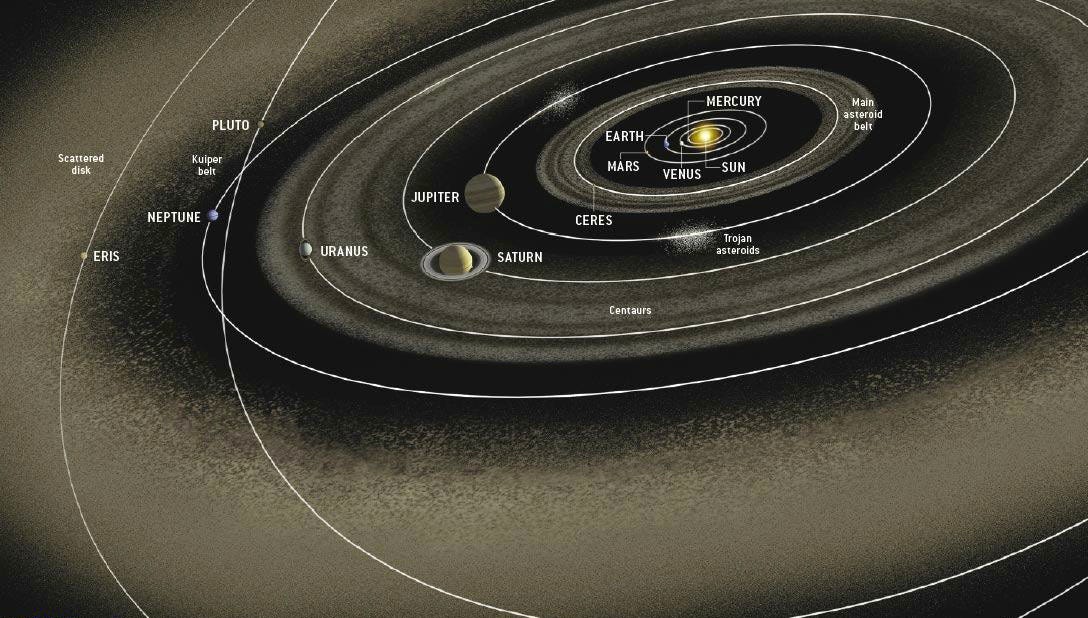
But what if we went up another factor of a million? Think about our Solar System, how large it actually is, more than a million million times bigger than we are in every direction. Surely another factor of a million would start encompassing other stars, but how many?
After all, space is an awfully big place.

Believe it or not, another factor of a million — which is a little more than a million million million (just over 10^18) times larger in every direction than we are — begins to capture everything within hundreds of light years of us. This includes the closest star cluster to us: the Hyades, possibly includes the Pleiades, and almost reaches the Orion Nebula. Drawing a sphere around us a few hundred light-years in size would encapsulate literally millions of stars.
But that’s three factors of a million, and we haven’t even left our own galaxy. But the next factor of a million is a doozy.
At the scale of hundreds of millions of light-years, we’re long past the point of just the Milky Way, our local group, or even the magnificent Virgo Cluster. Instead, we’re starting to see the great cosmic filaments and vast, underdense cosmic voids that make up the largest-scale structures that exist. A factor of 10^24 larger than a human — or a million million million million times as large as we are in every direction — allows us to see not only the full scale of our galaxy and its hundreds of billions of stars, but to begin to perceive the full extent of the visible Universe. At this scale, there are many thousands of galaxies accessible to us, and our Milky Way is an unremarkable spiral on the outskirts of our local supercluster.
Yet our Universe — the part of it we can see, receive information from and have ever communicated with since the Big Bang — is ever so much bigger than this.

But if you’re seeking a fifth factor of a million, the Universe simply won’t get you there. Our observable Universe caps out at about 92 billion light-years in diameter, less than a thousand times as large in all directions as our previous scale. It contains some 10^80 atoms, clumped together in maybe a trillion galaxies, each with typically hundreds of billions of stars.
But one of the most remarkable things about the Big Bang is that all of this, some 13.8 billion years ago, was once contained in a very small region of space, a region much smaller than our Solar System is today!
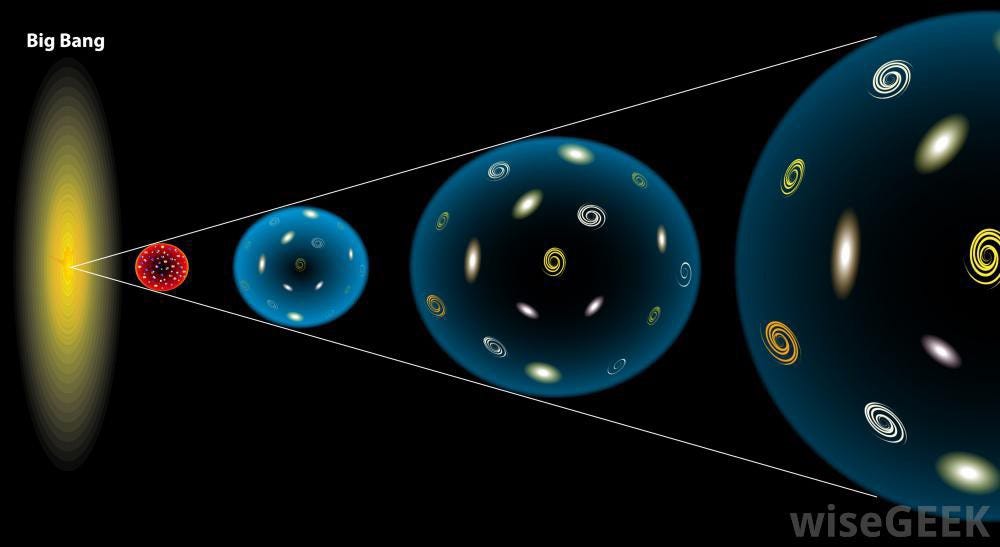
The thing that you might immediately wonder is whether there’s more Universe beyond the part that’s observable to us today, and — if so — how far does it go on? And what does it look like? And what are the physical laws in that part of the Universe?
Based on our observations of everything we’ve been able to see, from stars to galaxies to the leftover glow from the Big Bang to the matter in intergalactic space, we can learn some amazing things.
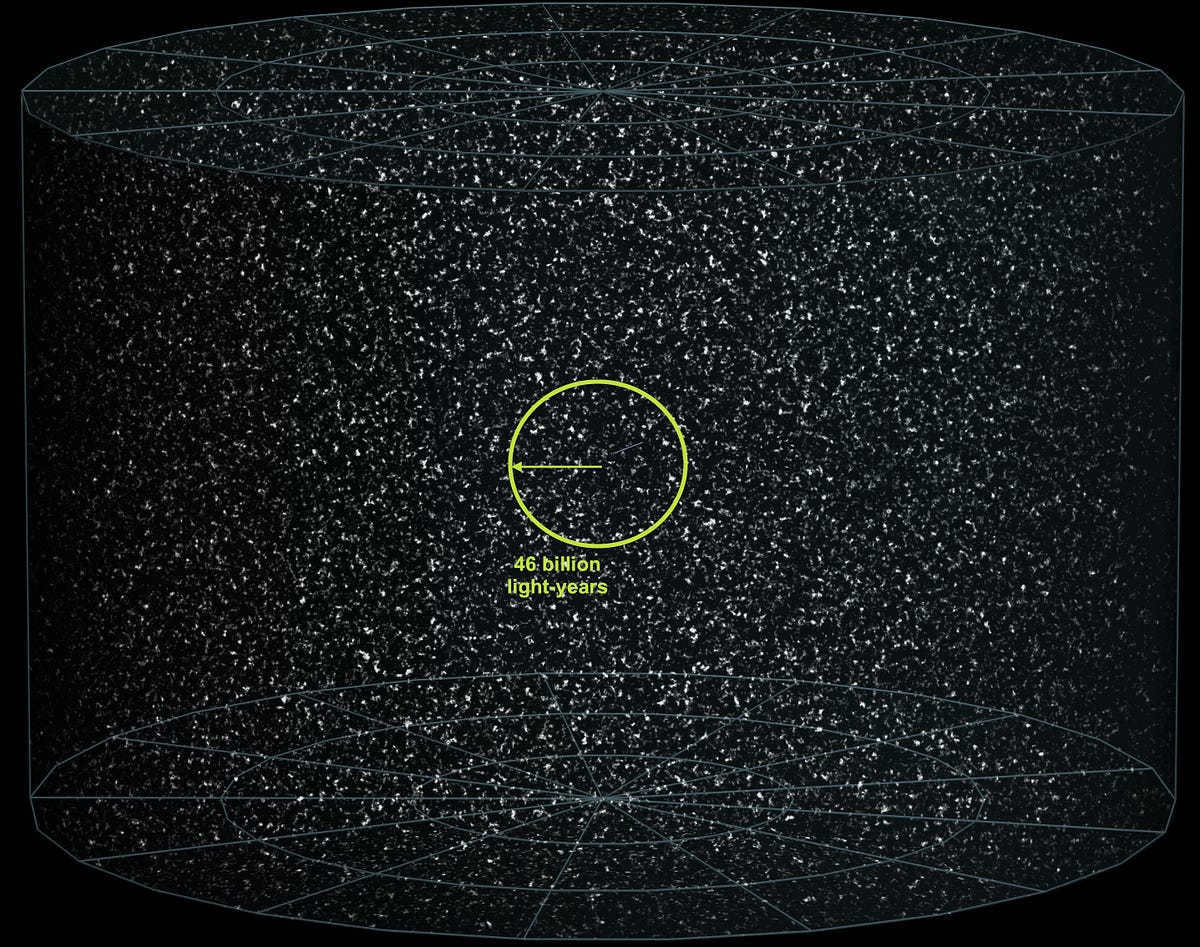
The part of the Universe that’s unobservable to us — filled with more planets, stars, galaxies, clusters and voids — is at least 150 times the size of the part that is observable! The fundamental constants look to be the same at all locations and at all times in our observable Universe, and our true Universe appears to be at least many millions of times the volume of the part we can see.
All of this, too, began in the same Big Bang that created all the matter-and-radiation in our hot, dense expanding Universe some 13.8 billion years ago. But that wasn’t even the very beginning.
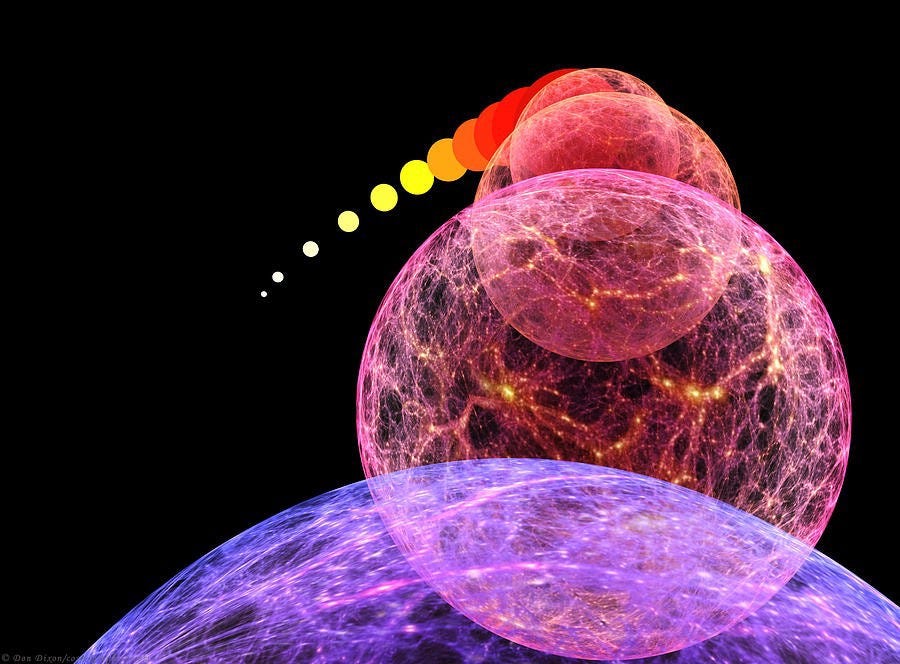
You see, the Universe is expanding today — and has ever since the Big Bang — in direct relation to the amount of matter and energy present in the Universe. When it was younger, hotter, denser and more energetic, the expansion rate was faster. And today, the energy density is lower than it’s ever been, and continues to decrease, asymptoting to a small (but non-zero) value.
That non-zero energy that it’s heading towards is known as dark energy, and it’s an energy intrinsic to space itself. It’s very small, but as the matter and radiation continues to dilute in our ever-expanding Universe, it has already become the most important contributor to our Universe’s expansion rate.
The most amazing thing about it, though, is that this is exactly what the Universe was doing before the Big Bang, only with a much greater energy and at a much faster rate! This was the period known as Cosmic Inflation.

Inflation stretched the Universe exponentially quickly, turning what might have originally been a very small region where it occurred into rapidly expanding spacetime. In very short order — far less than a second — a region of space that began as small as a single electron would have expanded to be trillions of times the size our observable Universe is today.
And in many of those regions, inflation ends, giving rise to a Big Bang, and a matter-and-radiation-filled Universe like ours.
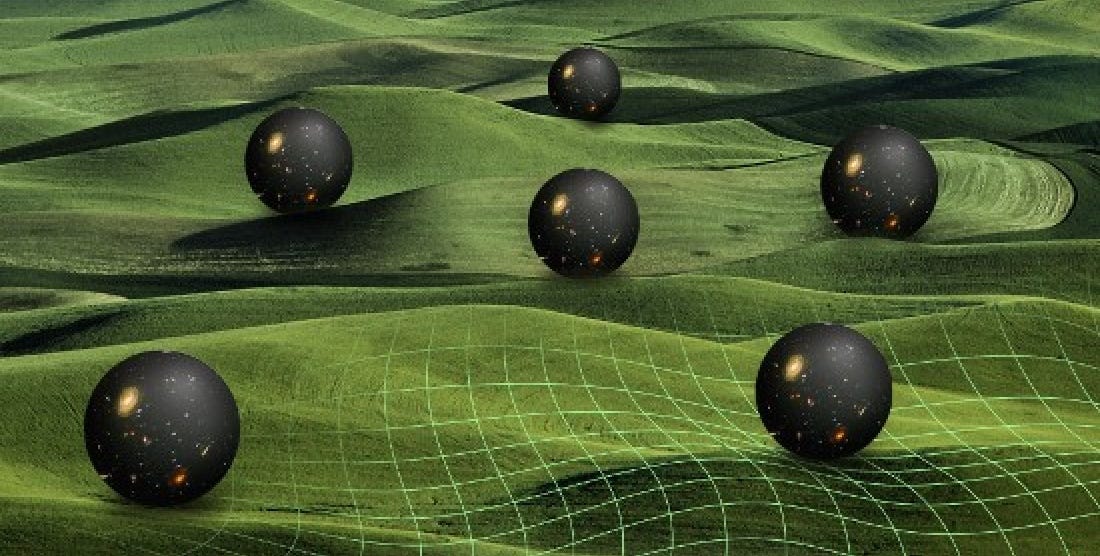
In the regions where inflation ends, Universes like our own are born. How big are they truly? We have only lower limits. But what about the regions in between them, where inflation hasn’t yet ended?
Until inflation does actually end, space keeps expanding exponentially! Which means that — when our Universe was born — the regions outside of it, where inflation didn’t end, kept expanding exponentially, and created tremendously more space in between the Universe we live in and any other “Big Bangs” that had occurred in other regions of space!
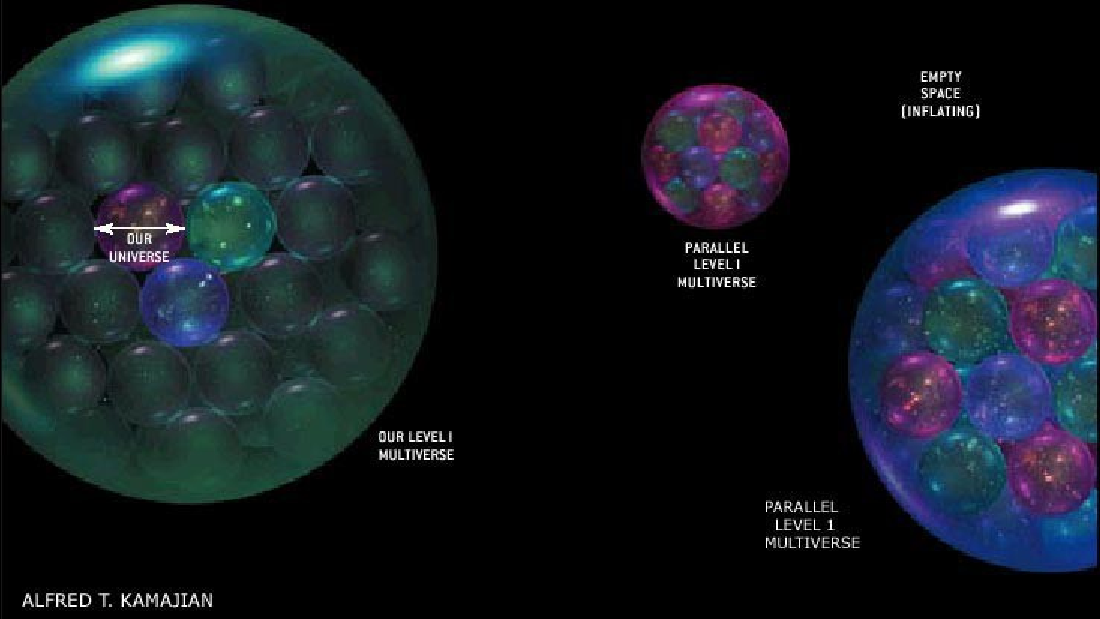
So it’s a race: the race for inflation to end and give rise to matter-and-radiation-filled regions of space, fighting against the race for the inflating regions in between the places where it ends to keep expanding exponentially.
If inflation ends quickly enough, these different Universes all find each other and take over, and no place would still be inflating today. On the other hand, if inflation doesn’t end quickly enough, no two Universes will ever find one another, and new ones will be spawned for all eternity as there will continue to be some regions of space that inflate forever.
Observationally, we can’t know for sure which one we have. But if we know the laws of physics — the laws that govern the observable Universe — we can apply them to the parts of the Universe we can’t observe, and learn what they predict.

And even though they predict that inflation will end in an arbitrarily large number of regions, creating an arbitrary number of matter-and-radiation-filled Universes like our own, all working models of inflation that agree with our observations come to the same conclusion: inflation lasts an eternity.
And therefore, space is filled with a huge (possibly not infinite, but we’re talking 10^10^(large number) here) number of regions that are not connected to one another, that consist of Universes much larger than our own, observable Universe. In other words, we have every reason to believe that we live in a Multiverse, not just a Universe.

This means that our observable Universe, as magnificent and large as it is, is only a tiny fraction of just one Universe in our vast Multiverse, whose true size and scope is not only unknown to us, but potentially unknowable. We have no ideas at the present time how to gain information about something that leaves no imprint or information in our observable Universe, and therefore we don’t know how to learn about it.
So, at present for the Multiverse, all we have are possibilities, and some wild speculations.
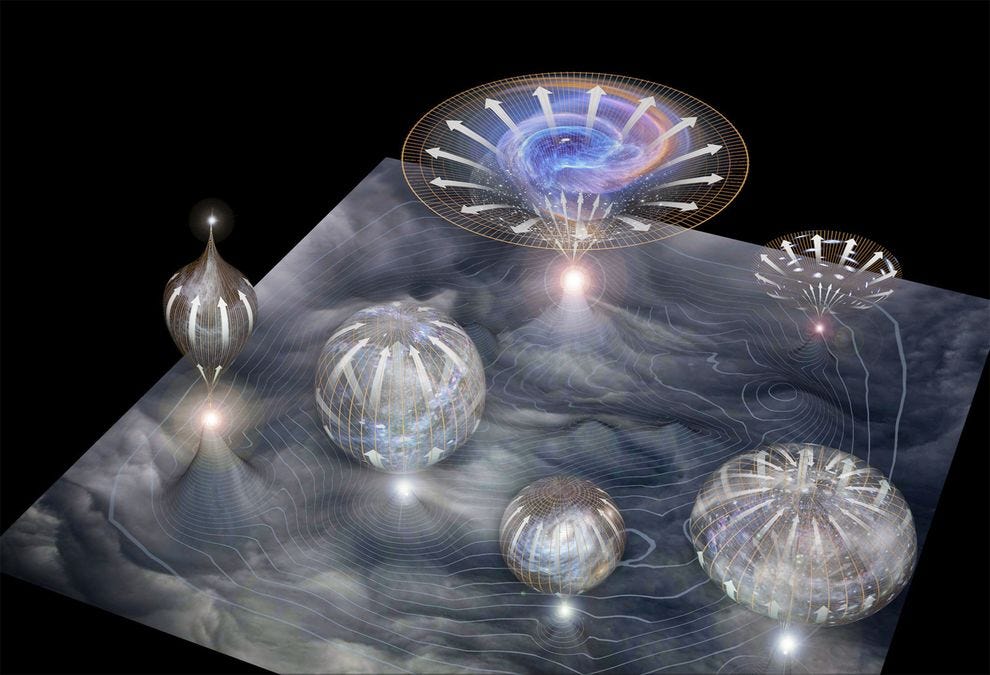
Whether these Universes are similar or different to our own, whether they have the same physical laws and properties, whether they have the same fundamental constants, particles and interactions, we do not know.
And at the same time, our very best laws of nature tell us that this is reality: we are a tiny fraction of our observable Universe, which is a tiny bit of the unobservable Universe, which is just one of a tremendous number of Universes in a multiverse that’s constantly generating new ones, and has been for billions of years. And that’s the Multiverse we live in, to the best of our knowledge!
Questions? Comments? Weigh in at the Starts With A Bang forum on Scienceblogs.





